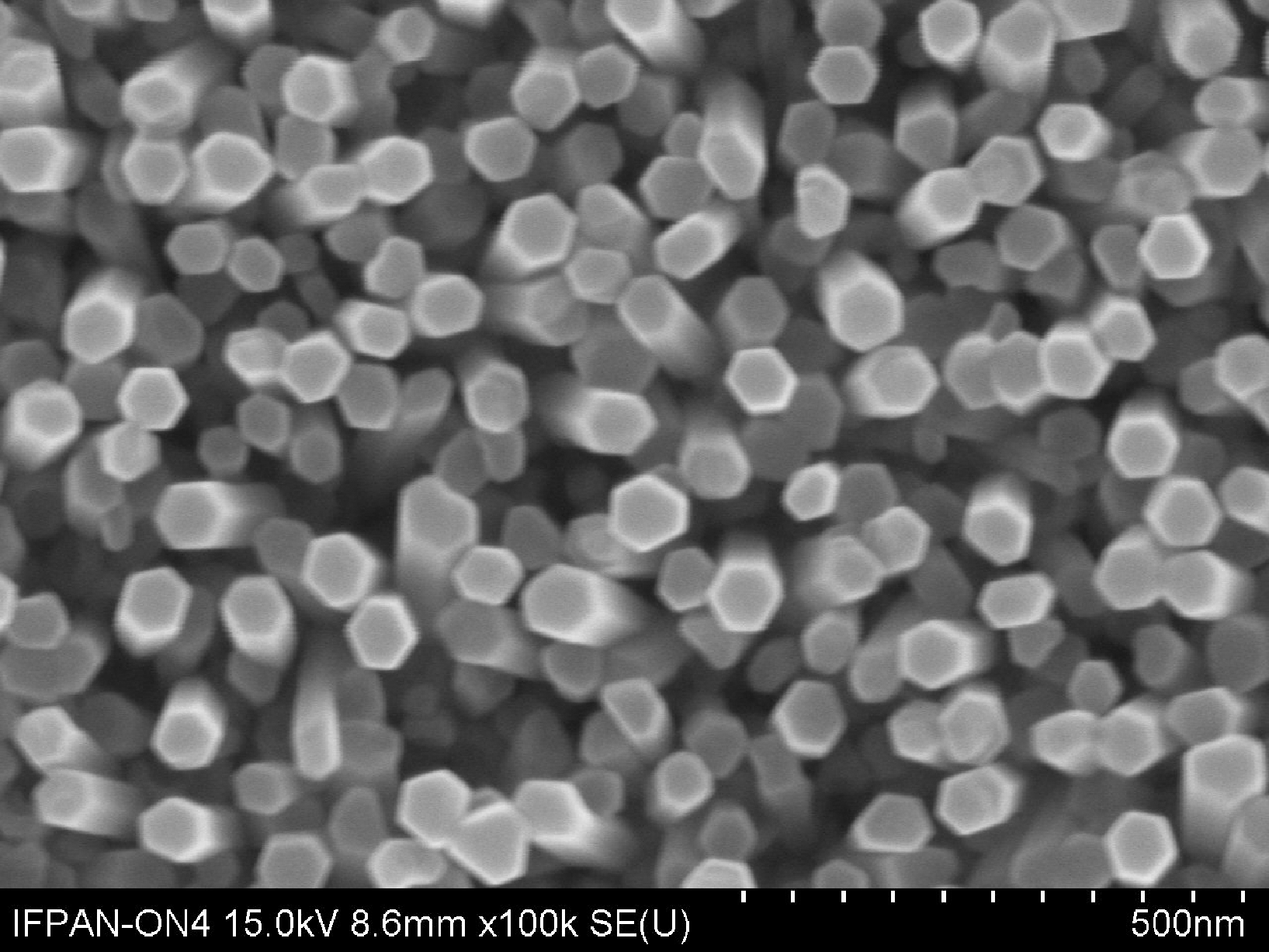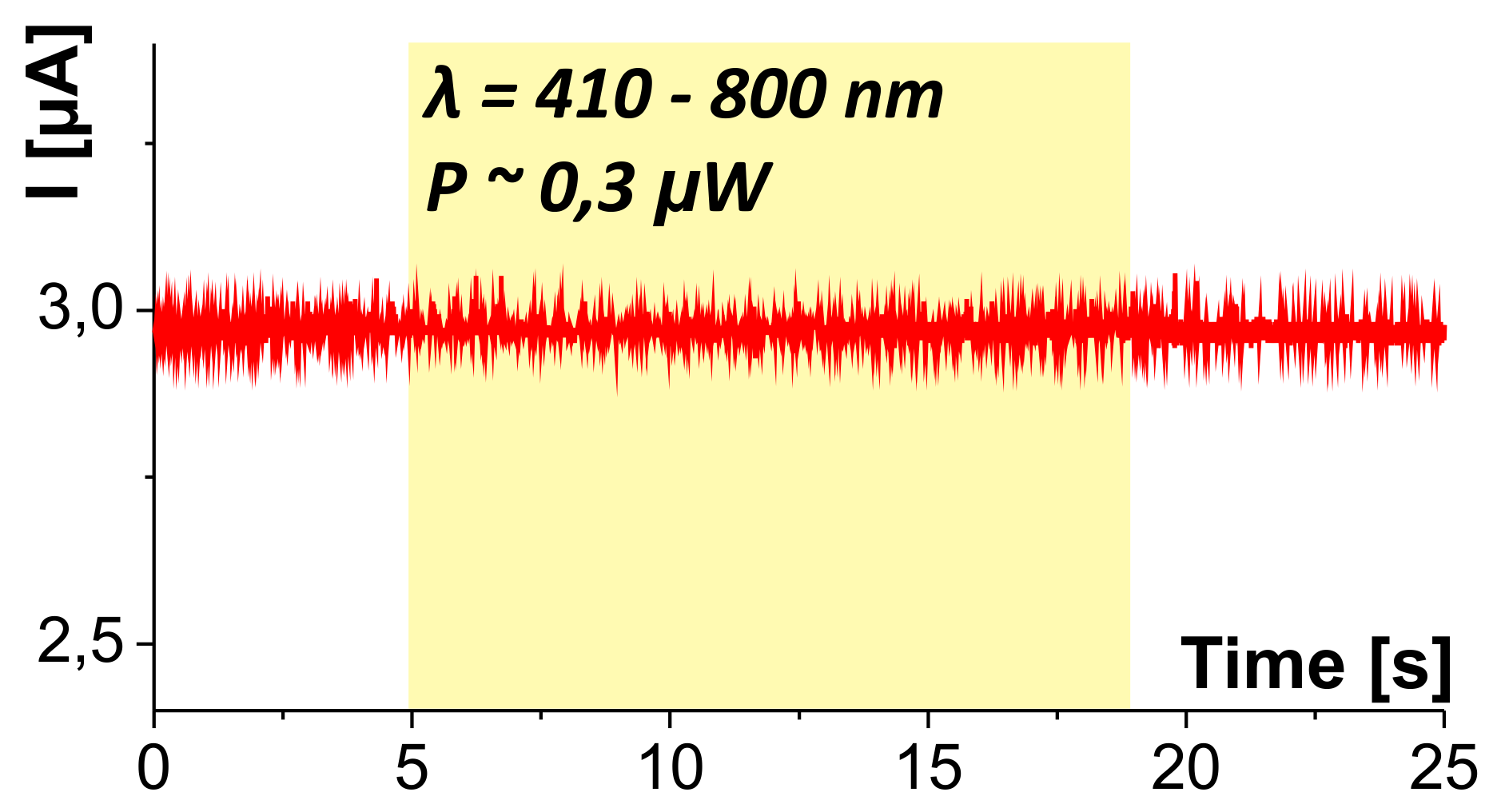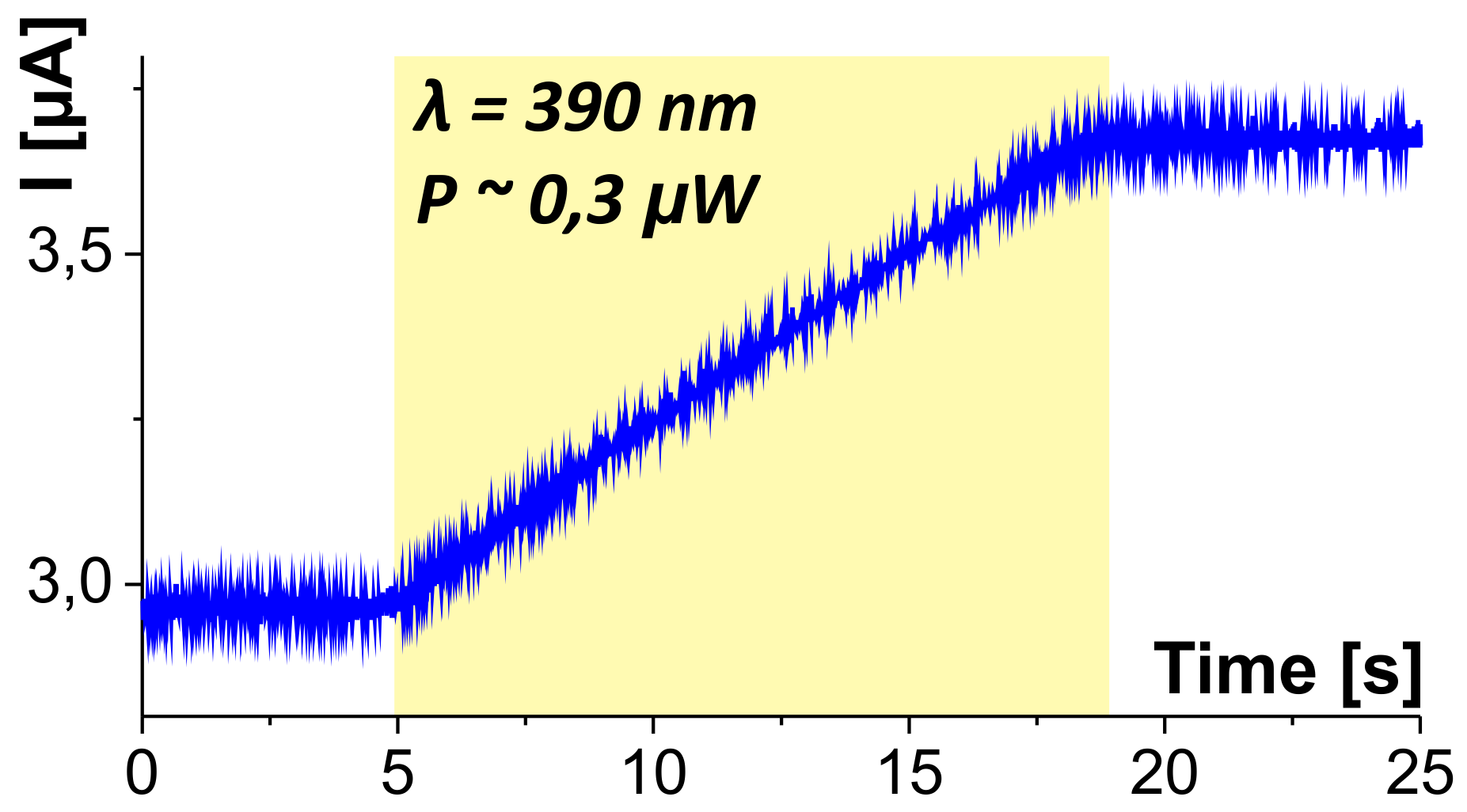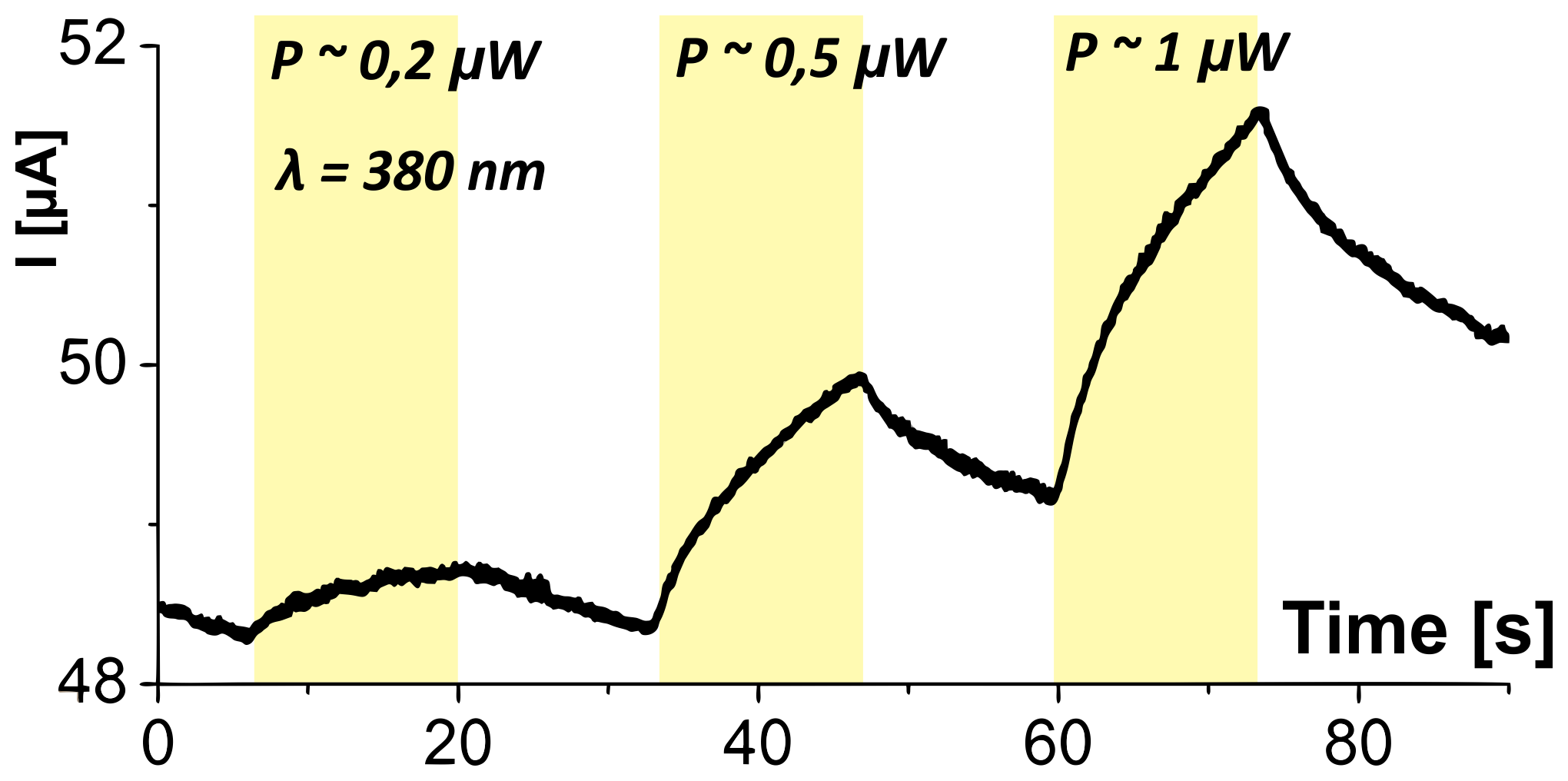

Highly sensitive UV detector based on ZnO nanorods | |||||
DescriptionSelective UV detector based on monocrystalline ZnO nanorods is characterized by a very high sensitivity (0.05 W/m2) with 400nm wavelength of the detection edge, so it can distinguish a visible light from the UV. ZnO nanrods, which are an active part of the detector, are produced by the new variant of the hydrothermal method on the isolating substrate (quartz). Detection mechanism is based on the surface phenomena - desorption and adsorption water and hydroxyl groups, therefore use of the nanorods provides the high sensitivity. In the vacuum the sensitivity increases and optical generation of electron-hole pairs is the dominant mechanism of detection. The detector does not require cleaning or annealing before use, the resistance returns automatically to its initial state, due to the adsorption of OH groups from the air.
Specification
ApplicationsUV detectors are widely used for protection of life and health, due to harmful character of an ultraviolet radiation. They are also used in research centers dealing with the characterization or optical technology, which use ultraviolet light sources.
Patent application: P.404645, 11th July 2013 |
| ||||



